The Columbus Suite 1990
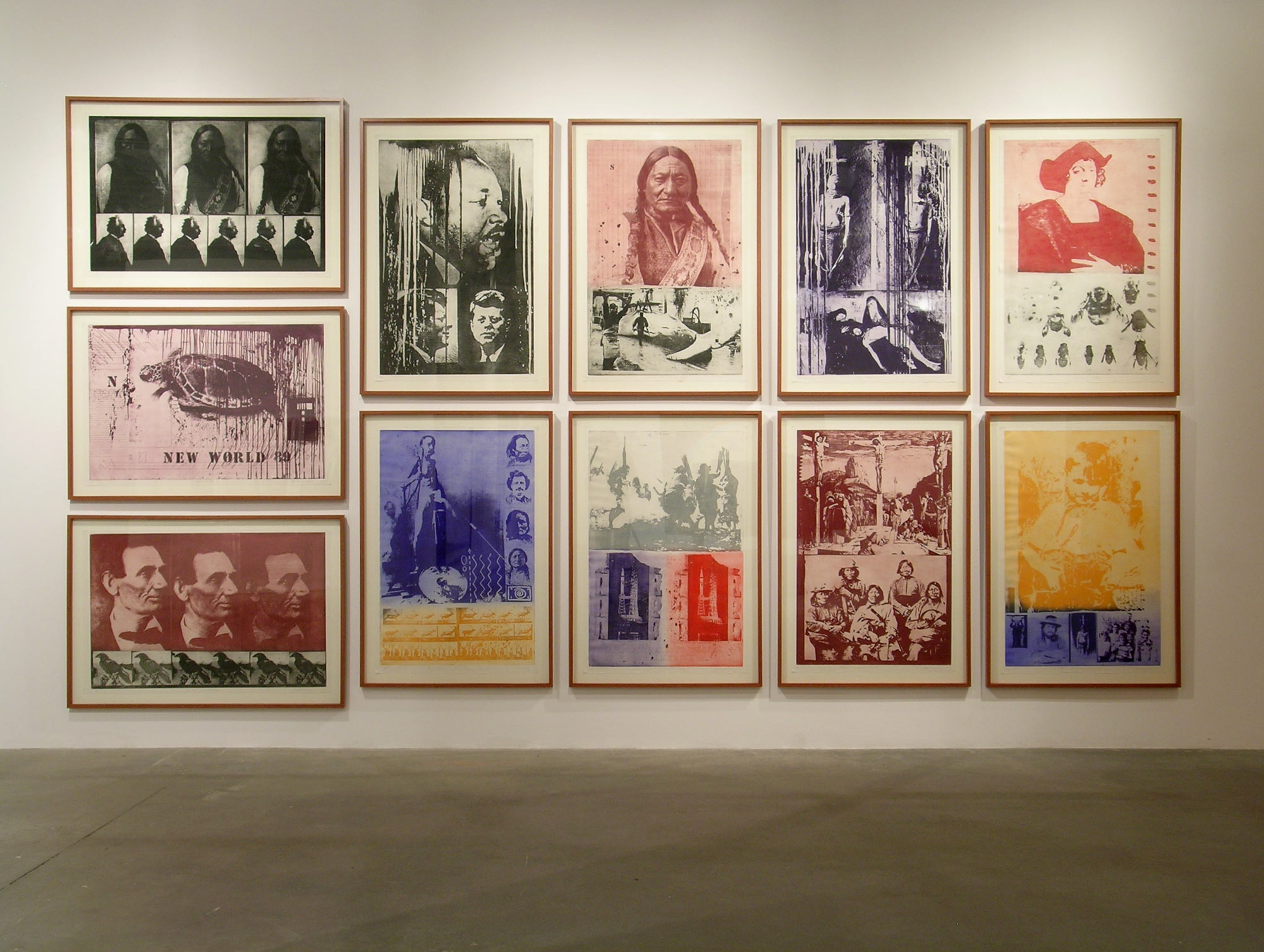
Installation view of Carl Beam, The Columbus Suite, 1990
Set of twelve etchings on Arches paper (eleven shown), 83.8 x 109.2 cm (landscape) or 109.2 x 83.8 cm (portrait) (each)
Museum of Contemporary Art, Toronto
© Estate of Carl and Ann Beam / CARCC Ottawa 2024
The Columbus Suite is Carl Beam’s most ambitious printed work, comprising twelve etchings produced in his studio at M’Chigeeng on Manitoulin Island. Begun in 1990 as a commentary on the quincentennial of Christopher Columbus’s arrival on the shores of Turtle Island (North America), it features complex imagery and layers of meaning. In seemingly unrelated juxtapositions of images, Beam critiques the privileging of rationalism as a superior form of knowing, the tragic legacy of residential schools, the catastrophic impacts of European colonization on Indigenous peoples on Turtle Island, and the enduring influence of genocide and racism. The suite is an element of a larger initiative entitled The Columbus Project, a work that Beam began to develop following the Garnier residential school reunion in 1988.
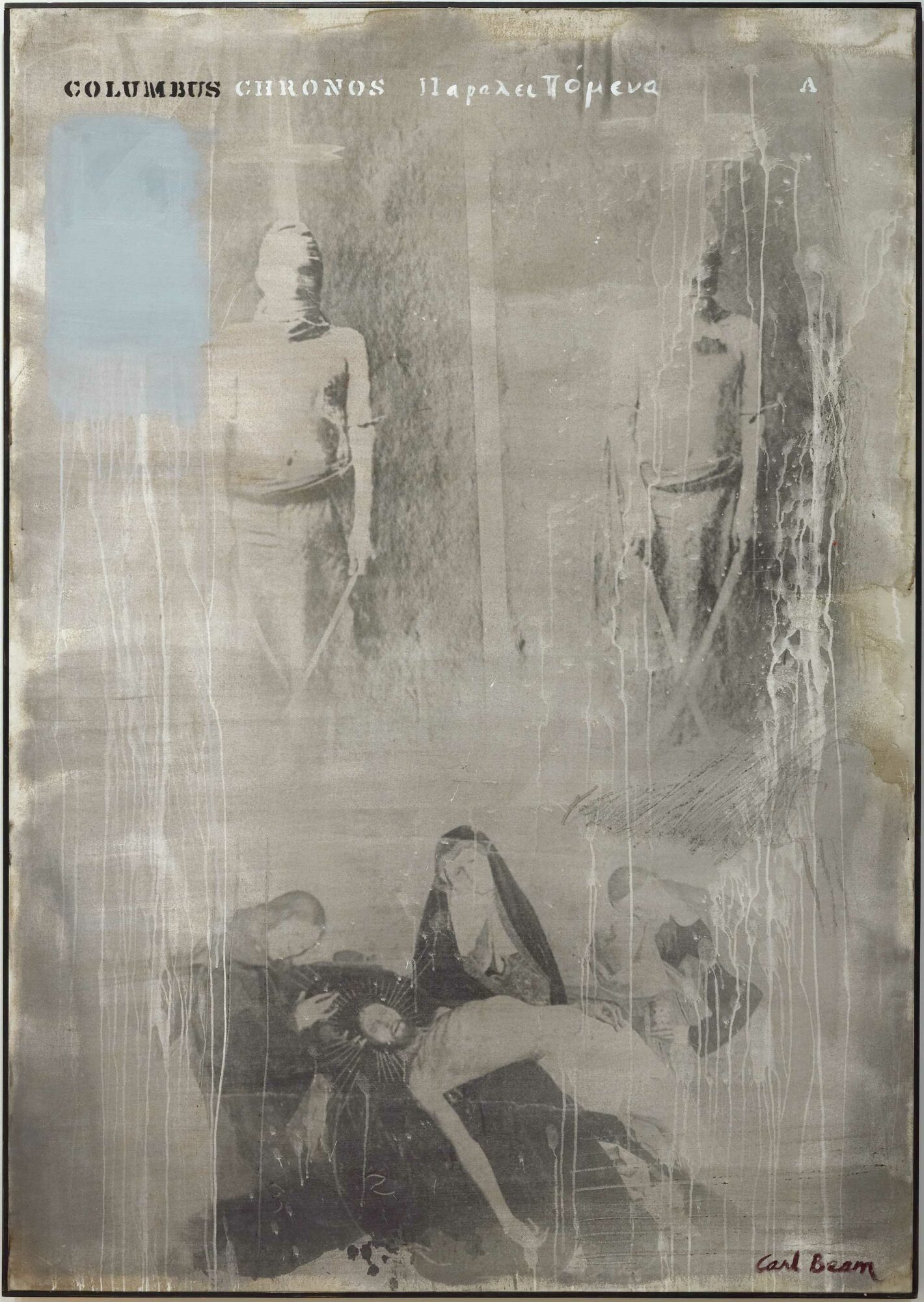
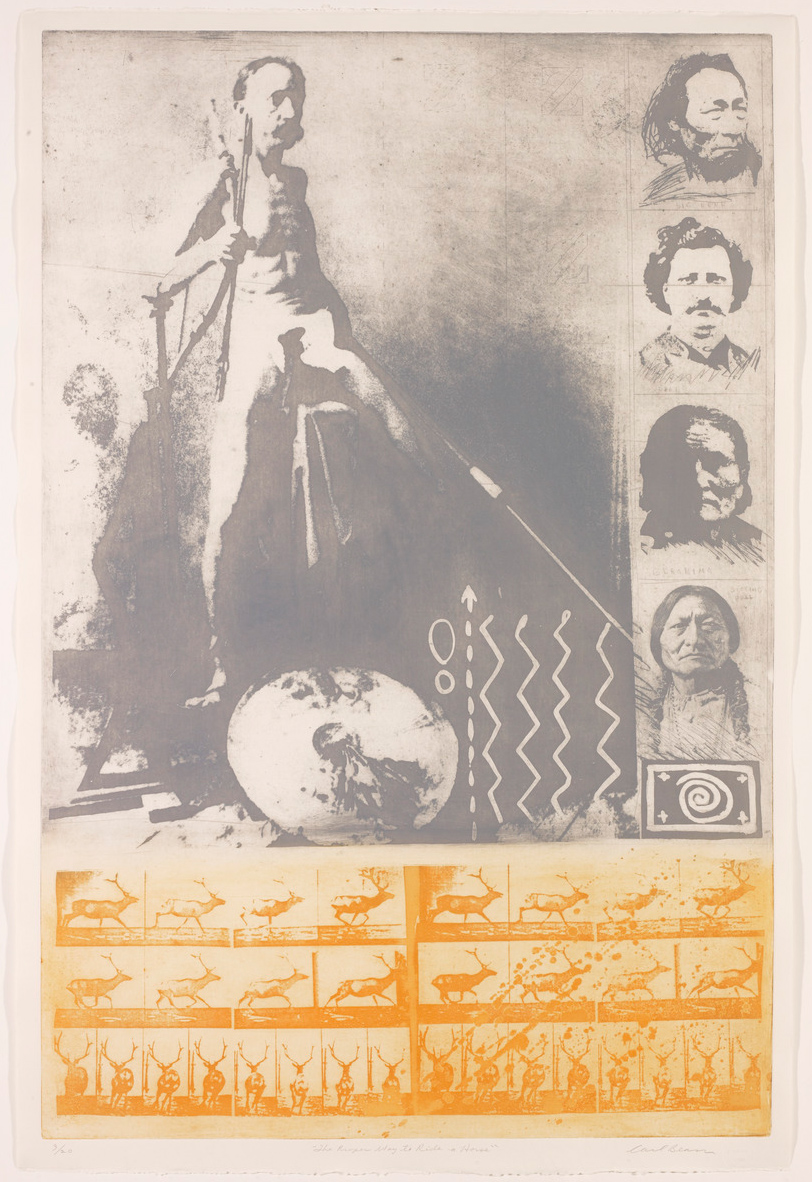
The first of the twelve etchings is New World, whose central image is a turtle—a totemic emblem of the North American continent. Looking out of the illusory space, the turtle directs its gaze to the viewer’s eyes; its head turns towards our world. The complicated visual field also includes stencilled words, stave-like lines that might allude to a musical score or a lined notebook page, drip-like ink passages, and an array of other lines and marks, among which is an almost illegible message—written in a cursive script—to Columbus himself: “Dear Columbus / the voyage was probably / doomed from the beginning— / the spirit [reviews?] the / unknown factor, the, the / in which etc etc / this will.”
The marks and signs all set a context—a visual polemic—that is given definition and stridency in the subsequent eleven prints. The figures who appear in the prints, including Jesus Christ, Louis Riel, Sitting Bull, Abraham Lincoln, Martin Luther King, and John F. Kennedy, are among history’s most revered martyrs, people who were persecuted and exiled. This episodic narrative, cast across the entire suite of prints, has been called “a colossal tragedy: the unresolved cultural struggles pertaining to race.” Beam achieves this effect through a mix of solemnity and humour, by radically juxtaposing, for example, a double image of a hooded Apache Gaan dancer with a representation of the Pietà in the print The Unexplained, 1989. In The Proper Way to Ride a Horse, he set an image of a naked ethnologist, Frank Cushing (1857–1900), astride a sawhorse adjacent to portraits of Big Bear, Louis Riel, Geronimo, and Sitting Bull. The imagery represents Beam’s lifelong project to recuperate Indigenous knowledge and identity concealed by European histories.
When speaking of this suite of prints, Beam said, “One act of faith equals one act of faith,” in an aspirational way. These works have been compiled as if making a reckoning of the act of keeping score: plus one, minus one. In a way, they have assumed the status of the koans that Beam so favoured as a device to elicit thought.

 About the Author
About the Author
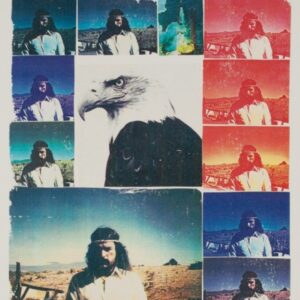 More Online Art Books
More Online Art Books
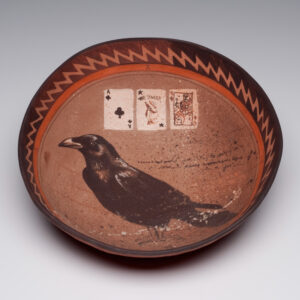 Acknowledgements
Acknowledgements